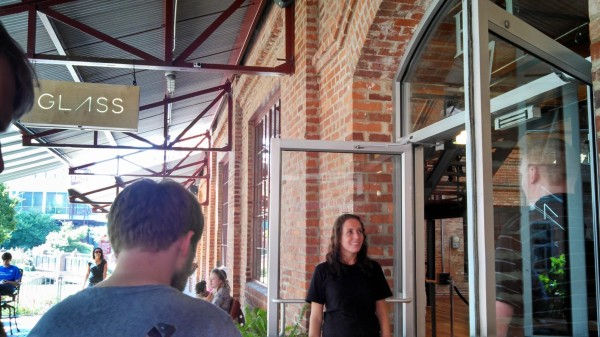Photo Recap: Google Glass Road Show Event In Durham, NC
- Fahad H

- Oct 7, 2013
- 3 min read

Basics of using Glass.
On Saturday, October 5, 2013, Google held its first ever Glass “road show” event in Bay 7 of the historic American Tobacco Campus in Durham, NC.
Google chose Durham as the first stop on this nationwide Glass tour because “it’s a tech hub, and Google has a reputation of investing here in North Carolina… Google has a data center in Lenoir, and there are also about 30 people working in a design office in Chapel Hill,” as Lead Glass Guide Devin Buell told me on Saturday. I’ve known Devin for a couple of years now, since he was the leader of Google’s local field marketing team (aka “G-feet”). I suspect that his close ties to the Triangle, as an attendee of the University of North Carolina at Chapel Hill and a former youth counselor, are part of the reason Google chose to debut Glass in Durham.
The event was only available to guests who pre-registered online, and according to Buell, it reached maximum capacity within 48 hours. When I exited the event at around 1:30 pm, I was attendee number 514, according to one of the 35+ Googlers present. There were people of all demographics there, but no one under 18 was permitted to try on Glass, because, according to Buell, “we are still actively studying safety with Glass,” and it appears they are not yet confident in its safety for eyes that are not fully developed.

Outside the Glass event, at the iconic American Tobacco Campus.

At the Entrance

Customized literature for the event.
The event was put on in style, from the complimentary water for those waiting in line outside to the impressive spread of refreshments from Angus Barn (a local restaurant whose head chef won “Iron Chef America” in 2007). Between elaborately prepared “mocktails” and seared ahi tuna, Google spared no expense.

Snacks from Angus Barn

Devin Buell, Lead Glass Guide, with the author, Jenny Halasz
Except when it came to the wifi. As one of the hundreds who got to try on Google Glass, I found that it was a bit buggy. While the capabilities of Glass are impressive, and I’ve tried it on before with no problems, the first pair that I received to try was, according to the Glass guide, “a little hot from overuse.” My second pair performed admirably with regard to taking pictures and other offline activities, but wasn’t able to provide any results when it came to searches, directions, or other activities that required wifi. When I asked the guide about this, she said it must be that the wifi was overwhelmed.
While I definitely understand how that can happen, it certainly makes it hard to picture how this technology would ever reach the saturation of other mobile devices. Still, it’s come a long way from the “basically two smartphones strapped to your head” that Buell says it was just three years ago. And with over 10,000 “explorers” (those who were accepted to the program and paid the $1500 price tag), Google has a tremendous amount of data and feedback to incorporate into Glass before it’s available to the public.
As to when it will be available, Google still can’t say. Buell says “sometime in 2014,” and when I pressed him on the expected price, quoting a figure of $299+ that I’ve heard from other sources, he said “we don’t know yet.” What will the next stop on this nationwide tour be? Buell says, “we don’t know yet; we’re waiting to see how this event turns out.”








Comments